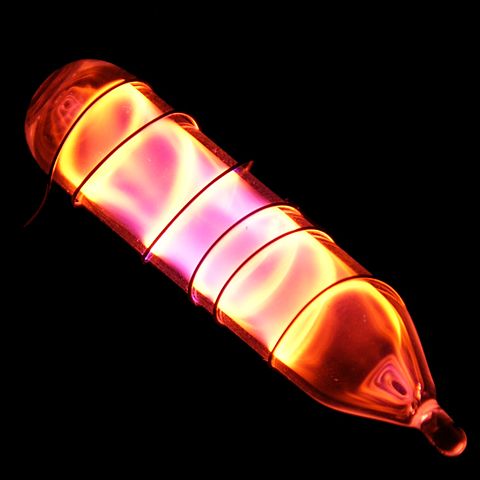

A P Hitchcock, and C E Brion, Neon K-shell excitation studied by electron energy-loss spectroscopy, 1980 J. King G C, Tronc M, Read F H and Bradford R C 1977 J. The main figure was obtained with a resolution of 0.37 eV FWHM (full width at half maximum) while the insert spectrum was recorded with a resolution of 0.8 eV FWHM.

The EELS profile of neon in the region of 1s excitation. Figure 2661 shows the EELS profile of neon in the region of 1s excitation.įigure 2661. The electron energy-loss spectrum of gaseous neon in the region of 1s (K-shell) excitation was investigated using small-angle (2 x 10 -2 rad)) inelastic scattering of 2.5 keV electrons. The continuously variable energy loss is similar to a tuneable photon energy. At these low energies, the spectra are dipole dominated and are analogous to photoabsorption spectra obtainable with bremsstrahlung or synchrotron radiation. There are now more than 150 colors possible.This book (Practical Electron Microscopy and Database) is a reference for TEM and SEM students, operators, engineers, technicians, managers, and researchers.Įlectron energy-loss spectroscopy ( EELS) has been applied to study the excitation of the inner-shell electrons of gaseous atoms and molecules with low-energy incident electrons, e.g. Visible even in daylight, people would stop and stare at the first neon signs dubbed "liquid fire." Red is the color neon gas produces, almost every other color is produced using argon, mercury and phosphor. Neon lighting quickly became a popular fixture in outdoor advertising. Anthony purchased the two signs reading "Packard" for $24,000. Georges Claude and his French company Claude Neon introduced neon gas signs to the United States by selling two to a Packard car dealership in Los Angeles. This idea found many potential users, and the use of neon tubes for advertising signs began in 1923. Then he found that by bending the tubes, one could make letters which glowed. Undeterred by this failure, Claude continued to think of ways for using his invention. The only problem was that nobody wanted a red light in their homes. Georges Claude displayed the first neon lamp to the public on December 11, 1910, in Paris. He made neon tubes which could be used like ordinary bulbs. This gave Claude the idea of producing light in an entirely new way. Neon glows red when an electrical charge was passed through it. The French engineer, chemist, and inventor Georges Claude (1870-1960), was the first to apply an electrical discharge to a sealed tube of neon gas (circa 1902). Sir William Ramsay got the Nobel Prize for Chemistry in 1904 because of his discovery of four of the noble gases (Neon, Argon, Krypton, and Xenon). They had discovered three members of the inert gas family within six weeks. Finally, on 12 July 1898 they found the fifth of the noble gases, Xenon. Ramsay liked the suggestion but, wanting to maintain the chemical family's suffix -on, called it "neon" (from the Greek νεος = new, young). "What are you going to call the new gas? I should like to call it «Novum»." The yellow line is fairly bright, and persists at very high vacuum. This had a complex spectra with many lines in red, a number of faint green, and some in violet. They then collected the first of the Argon to vaporize. In June, they solidified some of their fifteen liters of Argon by surrounding it with liquid air boiling under reduced pressure. On they discovered Krypton (but, they were not looking for that gas, the fourth member of the inert gas family). Travers (1872-1961), he continued to search this member of the inert gas family. "Here is a supposed gas, endowed no doubt with inert properties, and the whole world to find it in." After his discovery of Argon (1894) and the isolation of Helium (1895) the British chemist Sir William Ramsay ((1852-1916), was faced with an almost insuperable problem: he had found the first and the third member of the group of inert gases (Helium and Argon), and now needed to find the intermediate member.


 0 kommentar(er)
0 kommentar(er)
